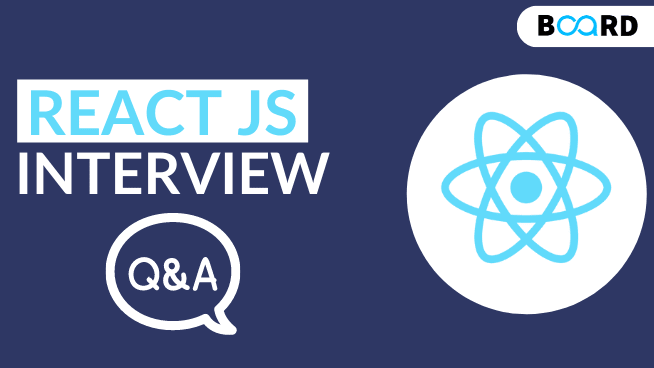Excelling Interviews for Specific Roles and Fields
Prepare for ReactJS Interview Questions

Are you an aspiring React developer? Do you want to know how to prepare for React JS interview questions? If yes, then look no further, you have come to the right place. Having an idea of the type of questions that the company will be expecting you to know, will give you an extra edge towards conquering any interview.
Most companies demand skilled React developers and hence we have come up with this article solely focusing on React interview questions and answers. This article will help you get familiar with some of the most asked React JS interview questions and help you crack the interviews.
1. Describe the most useful Features of React?
The top features of React include the following:
- JSX is one of the most useful features of React, that allows us to write JavaScript and HTML code in the same file.
- Components are the foundation of React and provide us the privilege to write the whole application using reusable pieces or components.
- React applications are highly scalable and faster in performance because of the virtual DOM.
2. What do you understand about JSX?
JSX is an extension of JavaScript that is used by React to determine the design of the user interface. This extension allows you to write an HTML structure within a JS file and makes the code cleaner.
JSX has many advantages that include writing react components. Moreover, it is highly useful when you have to create a nested element. Without JSX, the nesting could look a bit clumsy but with JSX, the readability of the code would get far better.
3. What is Virtual DOM?
DOM stands for Document Object Manipulation. A virtual DOM is a virtual JS representation of the actual DOM and is stored in the memory. It is lightweight and is used in synchronization with frameworks like React.js, Vue.js, etc. We used a virtual DOM in place of a real DOM because the former can be updated faster than the latter.
4. Differentiate between the Controlled and the Uncontrolled components?
In a controlled component, the data is controlled and handled by React. Sometimes, it is also known as a dumb component since it is controlled by a parent component that handles it by callback.
In an uncontrolled component, the DOM itself controls and handles the form data. The uncontrolled components are quite similar to HTML structures.
5. What is the Importance of State and Props in React?
The state data structure is initialized with a default value during the mounting of a component. The state can be changed or manipulated. However, Props or properties of a component can never be mutated.
The state and prop both do the similar thing but they have different ways. Most of the components do not have states. Props are for non-mutable data whereas states are for mutable ones.
6. Explain the Reason why Browsers can’t read JSX?
JSX contains both JavaScript and HTML structures. But the browsers are only capable of reading plain JS objects. That is the reason why browsers can’t directly understand JSX.
JSX can be converted into JS objects using trans compilers such as Babel. Babel is the most popular compiler used for this purpose. After converting the JSX into pure JS and HTML, the browsers will be able to understand the file.
7. Explain Redux and its Components?
Redux is the JS library used for creating the user interface by managing the states in the whole application. This open-source library has the following three components:
- Action is the source from which the application information is transferred to the store. Action is nothing but a JS object with a type field.
- Reducer receives state information from action and specifies how this state is changed.
- Store as the name suggests is a container that contains the application’s state. It brings the action and reducer together. One application can only have one store.
8. Explain the lifecycle of a React component?
The lifecycle of any React component includes three major phases- Initial Rendering, Updating, and Unmounting.
The first phase renders the component into the DOM. In the second phase, the component is updated as per the state or props. In the final phase, the component is unmounted or destroyed from the DOM.
9. Tell us something about Flux?
Flux is an application structure that is complementary to React. Flux contains unidirectional data that flows through the application until it hits the target and gets displayed on the screen. It stabilizes the application and helps it in reducing run-time errors.
10. What do you understand about the React Router?
React Router is used to create routes in a React application. This library syncs the UI while the application routes to different URLs. It prevents refreshing the web page when the user navigates to a different component.
Bottom Line
This article covered some of the most popular React JS interview questions to help you prepare for your upcoming interview. To excel in the field of development and get an in-depth knowledge of the trending technologies, check out Board Infinity’s Full Stack Development Course today.
